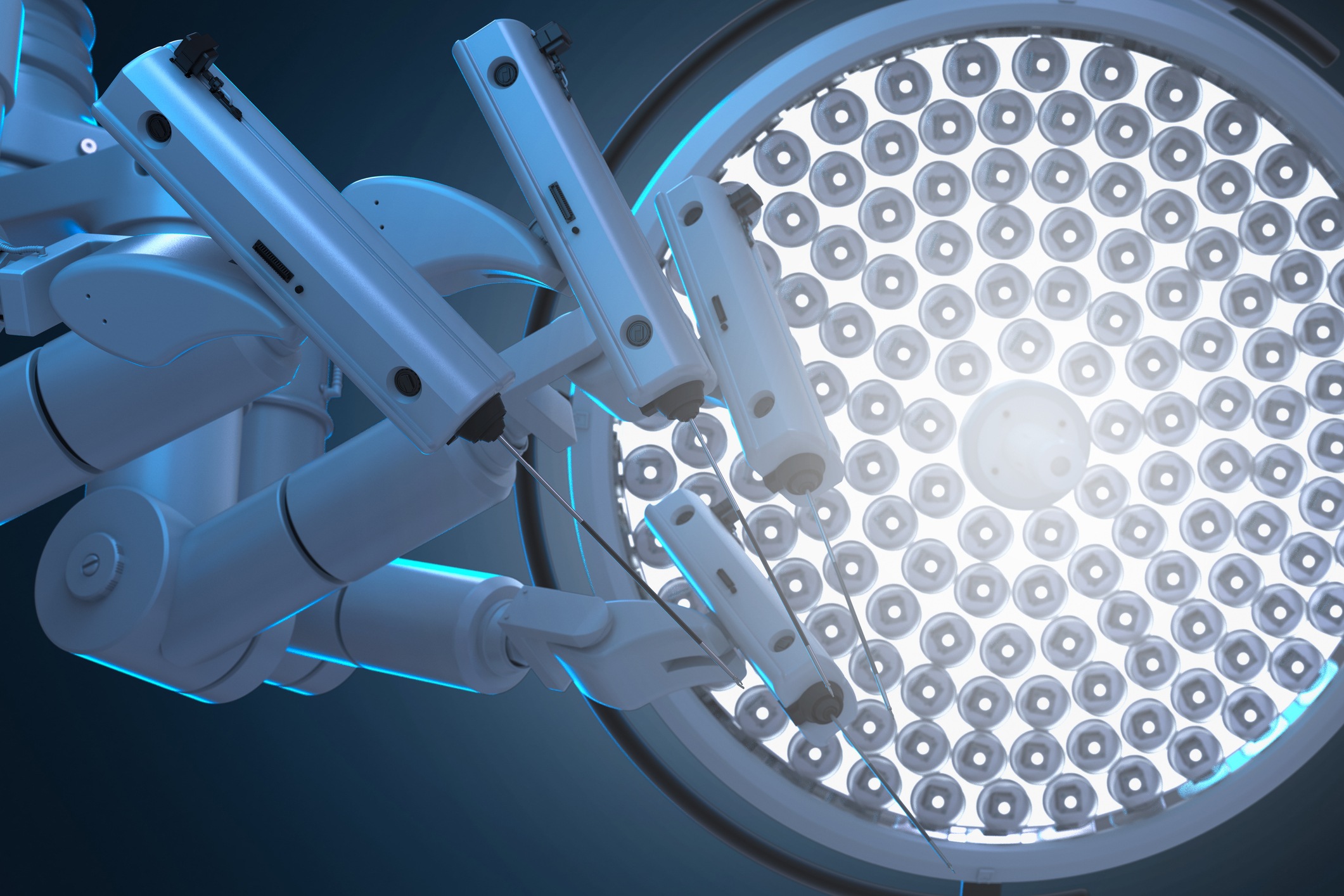
Robotic-assisted surgery has become a topic of discussion in orthopedics, being that the technology has the potential to improve surgical accuracy and decrease rates of reoperation. Robotic surgery is often viewed as an autonomous robot completing the procedure without human interaction; however, it is important to note this is not the case. Robotics-assisted surgical systems are guided by professional, certified surgeons to facilitate the procedure being conducted. Robotic technologies are of primary interest in joint replacement procedures, such as knee arthroplasty. In this article, we discuss two FDA-approved robotic surgical systems for knee replacement surgery.
Mako by Stryker
Approved by the FDA in August of 2015, Stryker’s Mako System is a robotics-assisted surgical platform that offers partial knee, total hip, and total knee operations. The pre-operative planning process allows for accurate implant positioning, using data from a CT scan to generate a 3D model of the patient’s bone structure. This yields a plan unique to the individual patient that the physician can review before the operation.
Modifications may need to be made regarding the optimal implant placement, with data being collected during the operation and applied to the CT scan model. The initial creator of the technology, Mako Surgical Corporation, was acquired by Stryker in 2013 for $1.65 billion. A recent analysis by Zacks Equity Research noted that the Mako Total Knee platform is in high demand as of recent, with Stryker’s projected robotic sales in 2019 showing strong interest from surgeons.
ROSA by Zimmer Biomet
The Warsaw, IN-based Zimmer Biomet received FDA-approval for its ROSA Knee System much more recently in January 2019. This system facilitates total knee replacements similarly to Mako, assisting with bone resections and evaluating soft tissues to optimize implant positioning during the operation. After receiving this approval, Zimmer took a very measured, disciplined approach to the launch of their robotic device.
“We’re going to do a limited launch out of the gate,” said Bryan Hanson, Zimmer Biomet CEO during the company’s earnings call earlier this year. “We want to be very disciplined in our approach to launching a new robotic system to make sure that we do it right. We have the right education. We have the right service levels. And we will do that limited launch for, let’s call it six months. Post that limited launch is when we move into full launch. And that’s when the organization gets unleashed and we utilize that technology in that full launch status.”
Furthermore, Zimmer’s ROSA system supports its Persona®, Vanguard®, and NexGen® implant families. The Persona Knee emphasizes personalization in the implant construction process, Vanguard offers surgical simplicity and component interchangeability, and NexGen bolsters the most widely used and clinically proven total knee replacement platform in the world, as per Zimmer.
What are the Differences?
Mike Matson, an industry analyst from Needham & Company, claimed that neither Mako nor ROSA are clearly superior after reviewing The American Academy of Orthopedic Surgeons (AAOS) meeting in March.
“Mako has a bone saw attached to its robotic arm and [Stryker] seems to be focusing most on haptics as a key point of differentiation and the main driver of the improved outcomes it is seeing with Mako,” explained Matson. “In contrast, Rosa has a cutting guide attached to its robotic arm and [Zimmer Biomet] points out that Mako’s haptics can become annoying to surgeons by limiting their control and ability to fully complete bone cuts.”
Another key difference that Matson highlighted is that Mako requires a CT scan, whereas ROSA uses X-ray data or an image-free analysis. He notes that Stryker will likely claim that the CT scan yields greater accuracy and that Zimmer will argue their approach promotes cost and time efficiency. Zimmer CEO Bryan Hanson also feels that his company has an advantage being that may surgeons are currently using Zimmer devices in arthroplasty.
“When you think about the number of surgeons that are doing procedures today with our implants, there’s a very good opportunity for us and we couldn’t be more excited about the fact that robotics is getting good traction,” he said in the company’s February earnings call.
“When you look at the largest number of surgeries being done today in knees, it’s our implants. It’s our surgeons doing those procedures. And we’re about to provide them with an opportunity to have access to robotics in that largest segment of knees globally. So that’s pretty exciting.”
Zimmer challenges Stryker’s robotic-assisted knee replacement platform with its mobile health compatibility as well. Partnering with Apple last year, Zimmer offers a smartphone app called mymobility that uses the iPhone and Apple Watch to better connect the patient and surgeon. The app is designed to improve the patient’s overall experience by helping them prepare for their orthopedic procedure, such as the knee replacement involving ROSA. mymobility also functions to help the patient after their surgery, providing patient-reported feedback and continuous data to the physician to improve the patient’s outcome, satisfaction, and care. The user can also securely message their care team through the app as well.
“We’re going to market directly to patients with a personalized robotic approach, using our mymobility app backed by Apple, which has very strong consumer demand,” Hanson said. “But I think our biggest opportunity to close the gap is to be able to get the mix benefit in the procedures we already have with the surgeons that we already have.”







 © 2025 Mashup Media, LLC, a Formedics Property. All Rights Reserved.
© 2025 Mashup Media, LLC, a Formedics Property. All Rights Reserved.